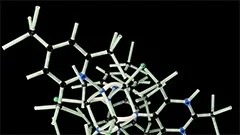Introduction
Community ecology is a subfield of ecology that studies interactions among species and their effects on the abundance, distribution, and diversity of populations within ecosystems. The primary goal of community ecology is to understand how communities of organisms are structured, function, and change over time.
In this course, we will delve into the fundamental concepts of community ecology, exploring key theories, patterns, and processes that govern community dynamics. We will examine various aspects such as species interactions, competition, cooperation, predation, mutualism, and parasitism. Additionally, we will discuss how environmental factors like climate, habitat, and resources influence community structure and stability.
Key Concepts in Community Ecology
Species Interactions
Species interactions are essential for understanding community ecology since they govern the relationships among species within an ecosystem. Common types of species interactions include competition, predation, parasitism, mutualism, commensalism, and amensalism.
Competition
Competition occurs when two or more species require the same limited resources for survival and reproduction. This interaction leads to negative effects on the growth and survival of one or both species. We will explore various types of competition, including intraspecific competition (competition within a single species) and interspecific competition (competition between different species).
Predation
Predation is another important species interaction in which one organism (the predator) kills and consumes another (the prey). We will discuss the role of predators in shaping populations, communities, and ecosystems, as well as explore various strategies used by prey to evade predators.
Mutualism
Mutualistic interactions are beneficial for both species involved since they provide mutual benefits. Examples include mycorrhizal associations between fungi and plant roots, pollination by bees and flowers, and nitrogen fixation by symbiotic bacteria in legumes. We will explore the mechanisms underlying mutualistic relationships and their importance in ecosystem functioning.
Community Structure
Community structure refers to the arrangement of species within an ecosystem based on their abundance, distribution, and diversity. This section will cover various aspects of community structure, such as species richness, evenness, and composition.
Species Richness
Species richness is a measure of the number of different species found within an ecosystem or area. We will discuss factors influencing species richness, such as habitat diversity, geographical location, and historical events.
Species Evenness
Species evenness refers to the degree of equality among the abundance of individual species in a community. We will explore the concept of evenness, its significance in ecosystem functioning, and factors affecting it.
Species Composition
Species composition is the arrangement of species within an ecosystem based on their identity and abundance. We will discuss various methods used to analyze and compare species compositions, such as similarity indices, ordination techniques, and diversity measures.
Community Dynamics and Stability
Community dynamics refer to changes in community structure over time due to processes like speciation, migration, and extinction. In this section, we will explore various factors influencing community dynamics, including environmental change, disturbance events, and species interactions.
Species Turnover
Species turnover is the replacement of one species by another within an ecosystem over time. We will discuss the mechanisms driving species turnover, such as migration, speciation, and extinction, and their implications for community stability.
Community Stability
Community stability refers to the ability of a community to maintain its structure in response to environmental changes or disturbances. We will explore factors affecting community stability, including species interactions, environmental conditions, and spatial scale.
Conclusion
In this course, we have delved into the fundamental concepts of community ecology, exploring key theories, patterns, and processes that govern community dynamics. By understanding species interactions, community structure, and community dynamics, we can gain valuable insights into how ecosystems function and change over time. Armed with this knowledge, we are better equipped to address pressing environmental issues and conserve our planet's biodiversity.
MCQ: Test your knowledge!
Do you think you know everything about this course? Don't fall into the traps, train with MCQs! eBiologie has hundreds of questions to help you master this subject.
These courses might interest you
Create a free account to receive courses, MCQs, and advice to succeed in your studies!
eBiologie offers several eBooks containing MCQ series (5 booklets available free for each subscriber).



